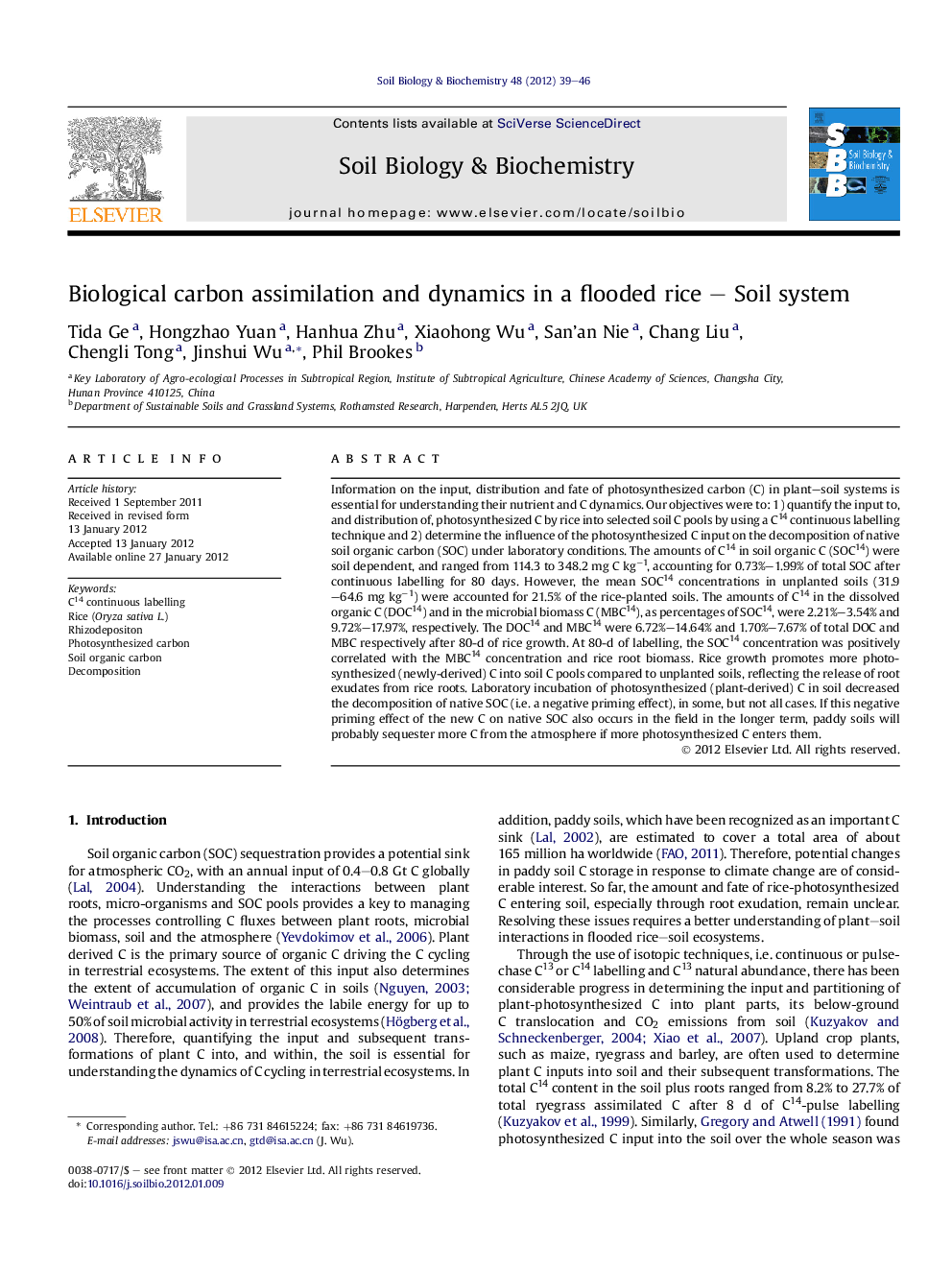| Article ID | Journal | Published Year | Pages | File Type |
|---|---|---|---|---|
| 2024931 | Soil Biology and Biochemistry | 2012 | 8 Pages |
Information on the input, distribution and fate of photosynthesized carbon (C) in plant–soil systems is essential for understanding their nutrient and C dynamics. Our objectives were to: 1) quantify the input to, and distribution of, photosynthesized C by rice into selected soil C pools by using a C14 continuous labelling technique and 2) determine the influence of the photosynthesized C input on the decomposition of native soil organic carbon (SOC) under laboratory conditions. The amounts of C14 in soil organic C (SOC14) were soil dependent, and ranged from 114.3 to 348.2 mg C kg−1, accounting for 0.73%–1.99% of total SOC after continuous labelling for 80 days. However, the mean SOC14 concentrations in unplanted soils (31.9–64.6 mg kg−1) were accounted for 21.5% of the rice-planted soils. The amounts of C14 in the dissolved organic C (DOC14) and in the microbial biomass C (MBC14), as percentages of SOC14, were 2.21%–3.54% and 9.72%–17.97%, respectively. The DOC14 and MBC14 were 6.72%–14.64% and 1.70%–7.67% of total DOC and MBC respectively after 80-d of rice growth. At 80-d of labelling, the SOC14 concentration was positively correlated with the MBC14 concentration and rice root biomass. Rice growth promotes more photosynthesized (newly-derived) C into soil C pools compared to unplanted soils, reflecting the release of root exudates from rice roots. Laboratory incubation of photosynthesized (plant-derived) C in soil decreased the decomposition of native SOC (i.e. a negative priming effect), in some, but not all cases. If this negative priming effect of the new C on native SOC also occurs in the field in the longer term, paddy soils will probably sequester more C from the atmosphere if more photosynthesized C enters them.
► At 80-d uniform labelling, organic C14 in rice-planted soils 4× more than in controls. ► At 80-d of labelling, SOC14 concentration was positively correlated with biomass C14. ► Less native SOC mineralization (i.e. a negative priming effect) found in some soils.
